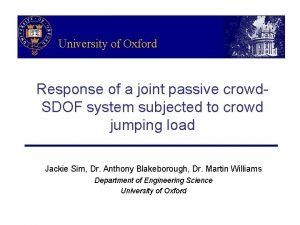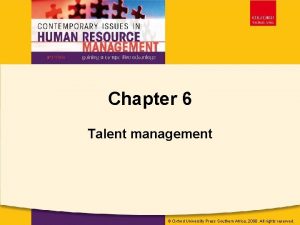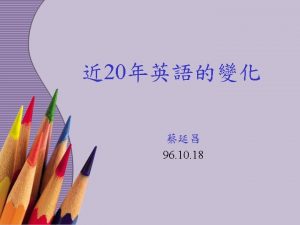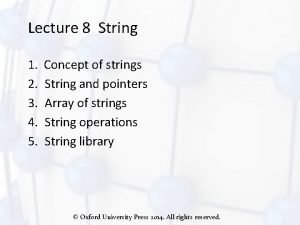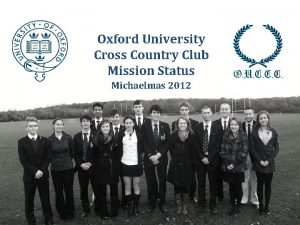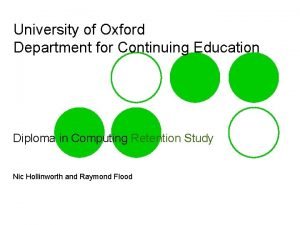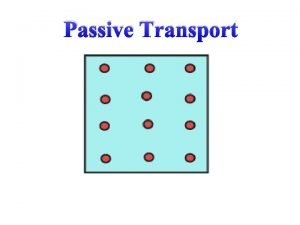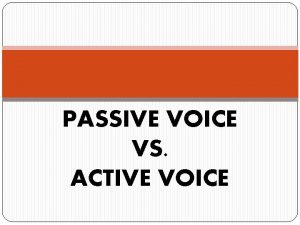University of Oxford Response of a joint passive
















- Slides: 16

University of Oxford Response of a joint passive crowd. SDOF system subjected to crowd jumping load Jackie Sim, Dr. Anthony Blakeborough, Dr. Martin Williams Department of Engineering Science University of Oxford

Vibration problem on cantilever grandstand Flexible structure with large span and lightweight + Synchronised crowd loadings 1. 5 ~ 2. 8 Hz

Dynamic analysis of cantilever grandstand Human-structure interaction Active crowd Passive crowd Load model Crowd model

Contents Outline 1. Passive crowd model How to model the seated and standing crowds? 2. Active crowd model How to model the jumping crowd? 3. Analysis of active + passive crowds on SDOF structure What is the structural response? 4. Results 5. Case study

Passive crowd model (1) • Griffin et al. – experimental tests and model development • Measure the apparent mass of 24 seated and 12 standing men: y 2 DOF 2 m 2 k 2 y 1 c 2 m 1 k 1 DOF 1 c 1 F

Passive crowd model (2) • Curve-fitting the crowd apparent mass response • Crowd model represented as transfer function • Seated: • Standing Fourth order polynomial i. e. 2 DOF system

Active crowd model (1) Experimental tests - University of Surrey - 100 test subjects - Each individual jumping on rigid force plates - Metronome at 4 beat frequencies (1. 5, 2, 2. 67 and 3. 5 Hz) - Synchronised test results were analysed

Active crowd model (2) Load-time history at 2 Hz Average impulse of each individual Average impulse of all individuals => Crowd jumping load

Active crowd model (3) Crowd jumping load Fourier coefficients Beat Frequency (Hz) 1 st 2 nd 3 rd 1. 5 0. 911 0. 150 0. 034 2 1. 193 0. 337 0. 040 2. 67 1. 228 0. 311 0. 032 3. 5 1. 020 0. 157 0. 008 High FC => Better synchronisation

Analysis (1) Passive crowd-SDOF system subjected to crowd jumping load + Crowd _ jumping load Interaction force m s F Feedback system representation x SDOF structure Seated / Standing crowd Displacement Acceleration

Analysis (2) Frequency domain analysis Parameters Natural frequency of empty structure: 1 ~ 8 Hz Structural damping ratio: 2% Passive crowd mass ratio, g: 0 ~ 0. 3 (increment of 0. 05) Subjected to crowd jumping load at 1. 5, 2, 2. 67 and 3. 5 Hz

Results - Maximum displacement

Results – RMS Acceleration

Case study – Cardiff Millennium Stadium • First mode at 2. 9 Hz • Crowd mass = 16800 kg per bay • Assume g = 0. 3 • Structure mass = 56000 kg for one bay • Structure stiffness;

Results • Rugby match between Australia and France in Nov 1999 • Displacement of approximately 50 mm reported after the match • Half full capacity • Mass ratio, g = 0 ~ 0. 15 Maximum displacement (mm) g Crowd jumping frequency (Hz) 1. 5 2 2. 67 3. 5 0 14. 2 12. 8 38. 2 14. 0 0. 05 7. 3 9. 0 34. 9 8. 2 0. 1 3. 3 4. 8 27. 1 3. 7 RMS Acceleration (times g = 9. 81 m/s 2) g Crowd jumping frequency (Hz) 1. 5 2 2. 67 3. 5 0 0. 20 0. 14 0. 70 0. 34 0. 05 0. 08 0. 09 0. 65 0. 2 0. 1 0. 03 0. 05 0. 52 0. 08

Concluding remarks • Passive crowd adds significant damping to the system and alters the resonance frequency • Preliminary analysis on the Cardiff Millennium Stadium gave good results • Current work – statistical model of the crowd jumping load – taking into account the timing of each individual
 Passive voice oxford
Passive voice oxford Oxford university press south africa
Oxford university press south africa Oxford university press 2019 answers
Oxford university press 2019 answers M.swan (oxford university press)
M.swan (oxford university press) Oxford university safety office
Oxford university safety office Strlen( oxford university press ) is
Strlen( oxford university press ) is Oxford university press malaysia
Oxford university press malaysia New wing
New wing Ouccc
Ouccc Oxford university press
Oxford university press Dropping out of oxford
Dropping out of oxford Oxford university press
Oxford university press Natural and forced response
Natural and forced response Natural and forced response
Natural and forced response A subsequent
A subsequent Lamb grading chart
Lamb grading chart External occipital protuberance
External occipital protuberance
